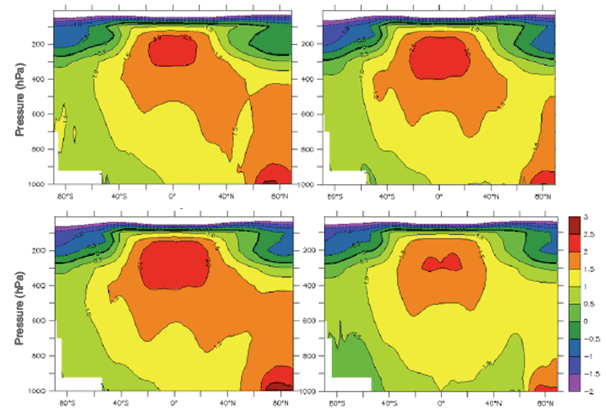August 3rd, 2012
Key Findings
- AMOC weakening has the effect of enhancing heat uptake at high northern latitudes, and of reducing warming and sea ice loss in that region.
- The presence (absence) of Labrador sea convection in the control run is associated with larger (smaller) AMOC weakening and associated effects.
Maria Rugenstein, Michael Winton, Ronald Stouffer, Stephen Griffies and Robert Hallberg. Journal: Journal of Climate. DOI: 10.1175/JCLI-D-11-00695.1
Summary
The future response of Atlantic meridional overturning circulation (AMOC) to increased carbon dioxide is known to be uncertain, with models showing 21st century weakening of 0 to 50%, according to the IPCC 4th report.
The authors examined the high northern latitude heat budgets of closely related climate models having large and small responses of AMOC to increased carbon dioxide. This paper shows that AMOC weakening is associated with the response of other important climate variables, so its uncertainty affects the projections for those variables as well.
Observations currently show strong warming and sea ice loss at high northern latitudes but no evident weakening of the AMOC. The results of this paper are a step toward understanding the relationship between these observations.
The use of closely related climate models enables us to narrow down the sources of the climate model response differences. In particular, the atmosphere is the same or similar and so we can infer an ocean source for the differences. However, the relationship between AMOC weakening and heat uptake magnitude is still circumstantial.
We hope to confirm this relationship in the near future by running climate change experiments with specified ocean circulation and circulation changes.
Declining Atlantic overturning reduces warming response to CO2, especially at high northern latitudes

Right: climate models that respond to increased CO2 with a large reduction in Atlantic overturning


